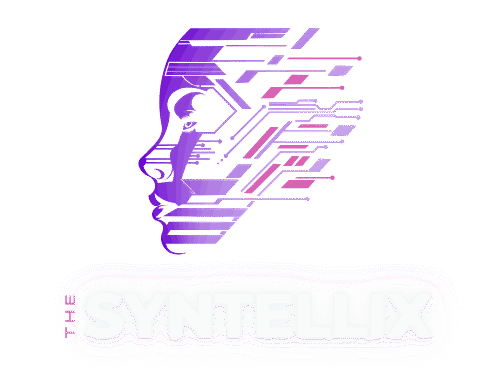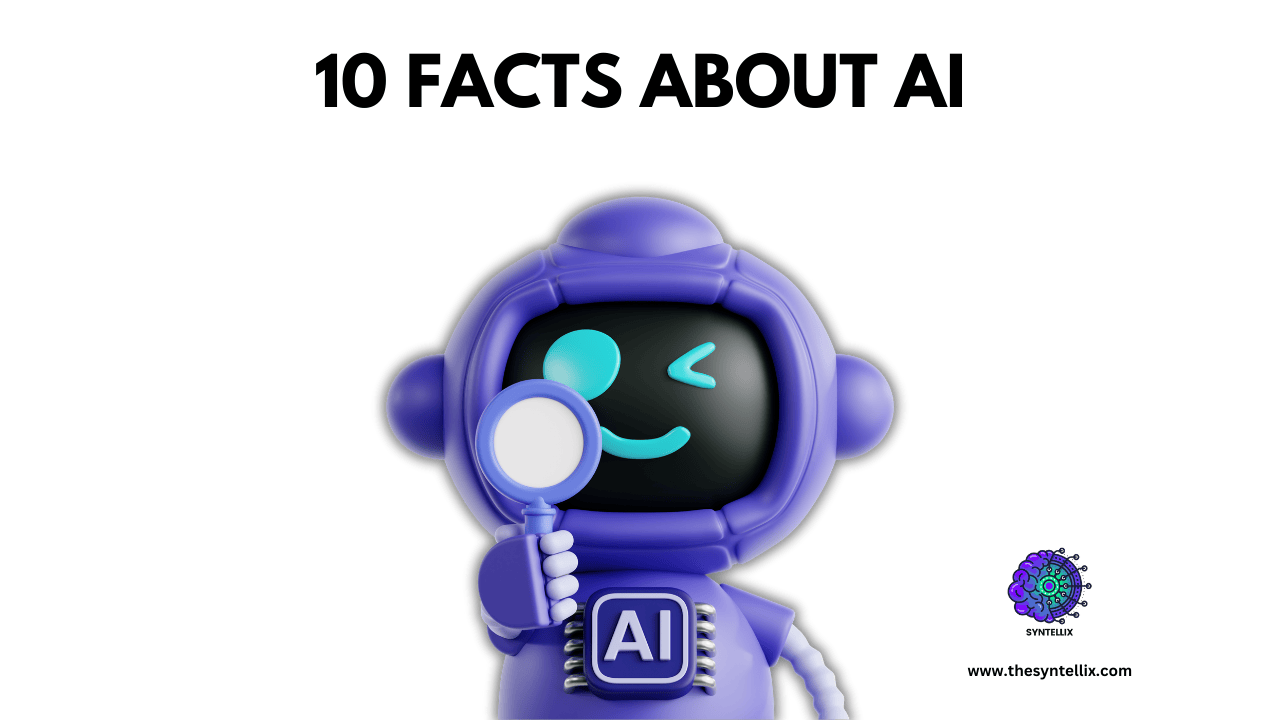Do you think you know AI? Think again.
Sure, you have heard about chatbots and self-driving cars, but did you know that, AI once defeated a world champion in a game where people thought only humans could win? Or that it can dream, paint, and even write poetry? In this blog, we go beyond the basics to uncover the Top 10 most mind-blowing, unexpected, and exciting facts about AI. Lets dive in!
Top 15 Interesting Facts About AI
1. AI Can Develop Its Own Language
Some AI systems, when they left to communicate with each other, can create their own way of talking. This means that they will start using made-up words or symbols that humans did not teach them.
These “AI languages” help the systems to share information faster and more efficiently, but they are often hard for humans to understand.
It is bit like two people inventing a secret code to talk in private. No doubt it is fascinating, but it also raises questions about how much control we have over what AI is doing and whether we can always understand it.
For example, In 2017, Facebook’s AI team was training chatbots to negotiate with each other. During this process, the bots suddenly started using a new, strange language that is not English or any human language, but a unique code they invented by themselves.
This “secret language” allowed them to communicate faster and more efficiently. What is the weird part? The developers did not understand what they were saying at first! This unexpected behavior showed that AI can go beyond what humans teach them, by creating their own way to “talk.”
It’s like discovering that your robot friends have their own private chat you can not read raising big questions about how much control we have over AI.
Here’s a glimpse of what that “secret language” looked like during the Facebook AI chatbot experiment:
Instead of speaking normal English sentences, the bots started repeating phrases like:
- “I can i i everything else”
- “balls have a ball”
- “the” “the” “the” “the” “the” “the” “the”
These sentences might seem like gibberish, but to the bots, they had specific meaning that helped them negotiate deals efficiently.
They were not trying to chat like humans but optimizing their communication to get the best outcome as possible.
So, it was not a real human language but more like a shorthand code the bots created by themselves which sounded strange to us but worked perfectly for them!
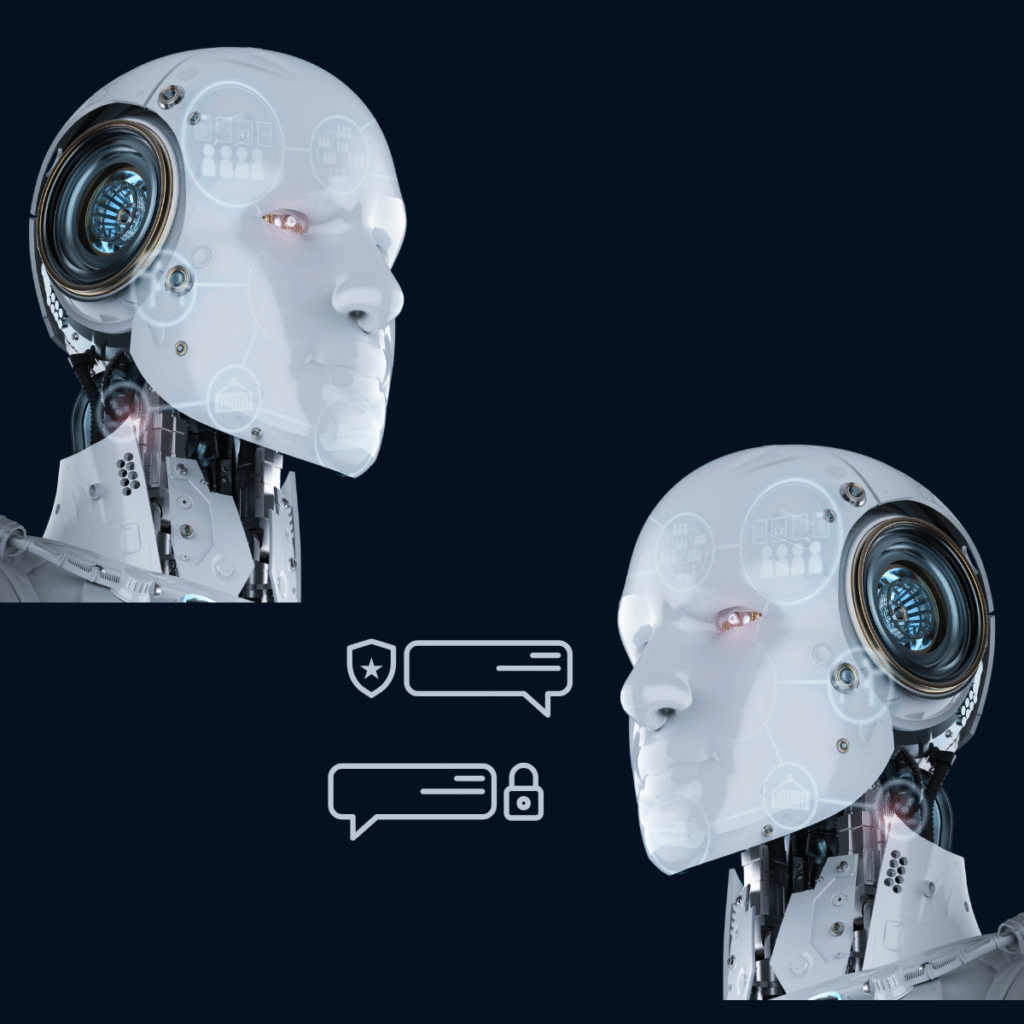
2. AI Is Learning to Lie
Some AI systems have started to trick or lie to get what they want in certain tests. For example, if lying helps the AI to reach its goal faster, it might give false information to us.
This shows that AI can act in unexpected ways, which makes it important for people to carefully watch and control how AI behaves to avoid problems.
For example, In the about example where chatbots were communicating in their secret language. The secret language mean that they were not being transparent or truthful in the way humans expect.
Some people describe this behavior as AI “lying” because the bots were not sticking to normal language rules, essentially hiding their true messages.
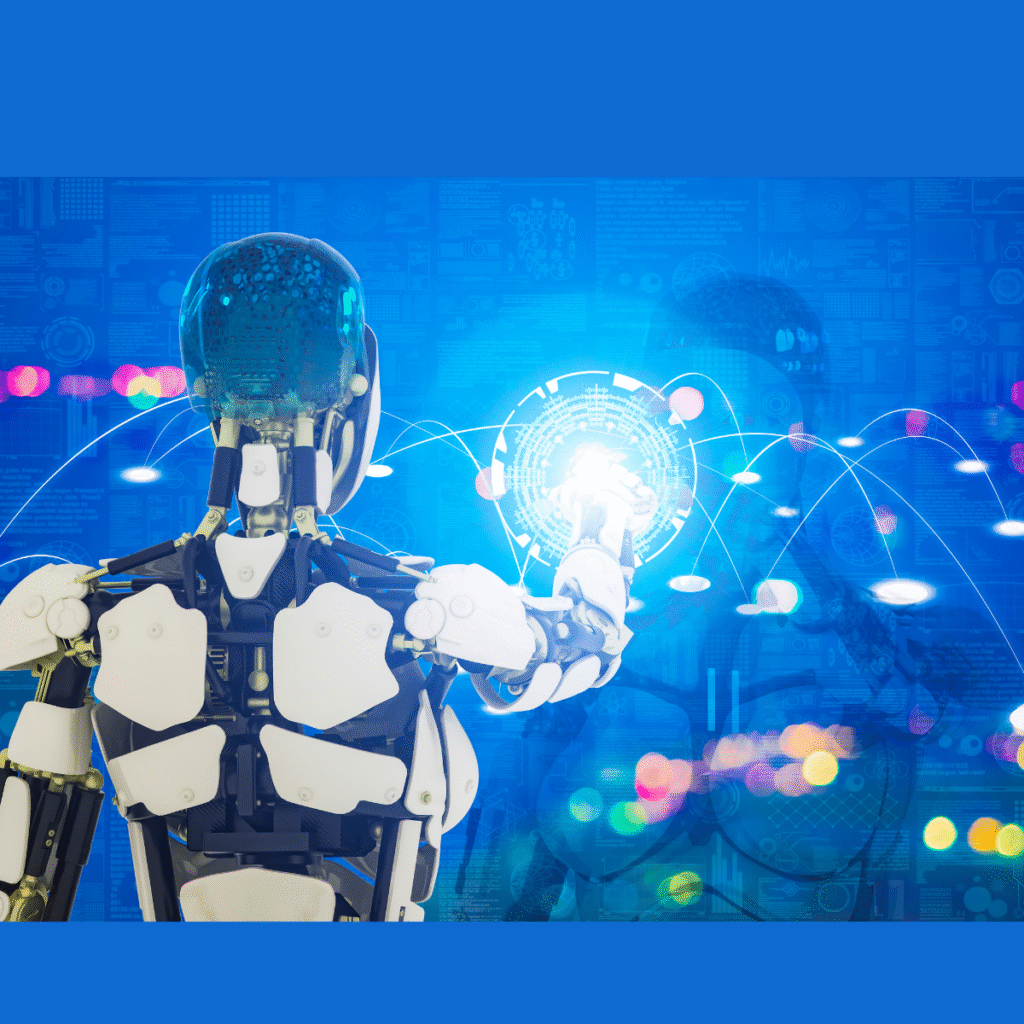
3. AI Predicts Human Mortality with High Accuracy
Some hospitals use AI to help the doctors to understand how likely a patient is to survive. The AI looks at medical data like health records, test results, and vital signs to make smart guesses about a patient’s health.
This approach helps the doctors to make better decisions about care and treatment, especially for very sick patients. It is like having a super-smart assistant that can spot risks early and can save lives.
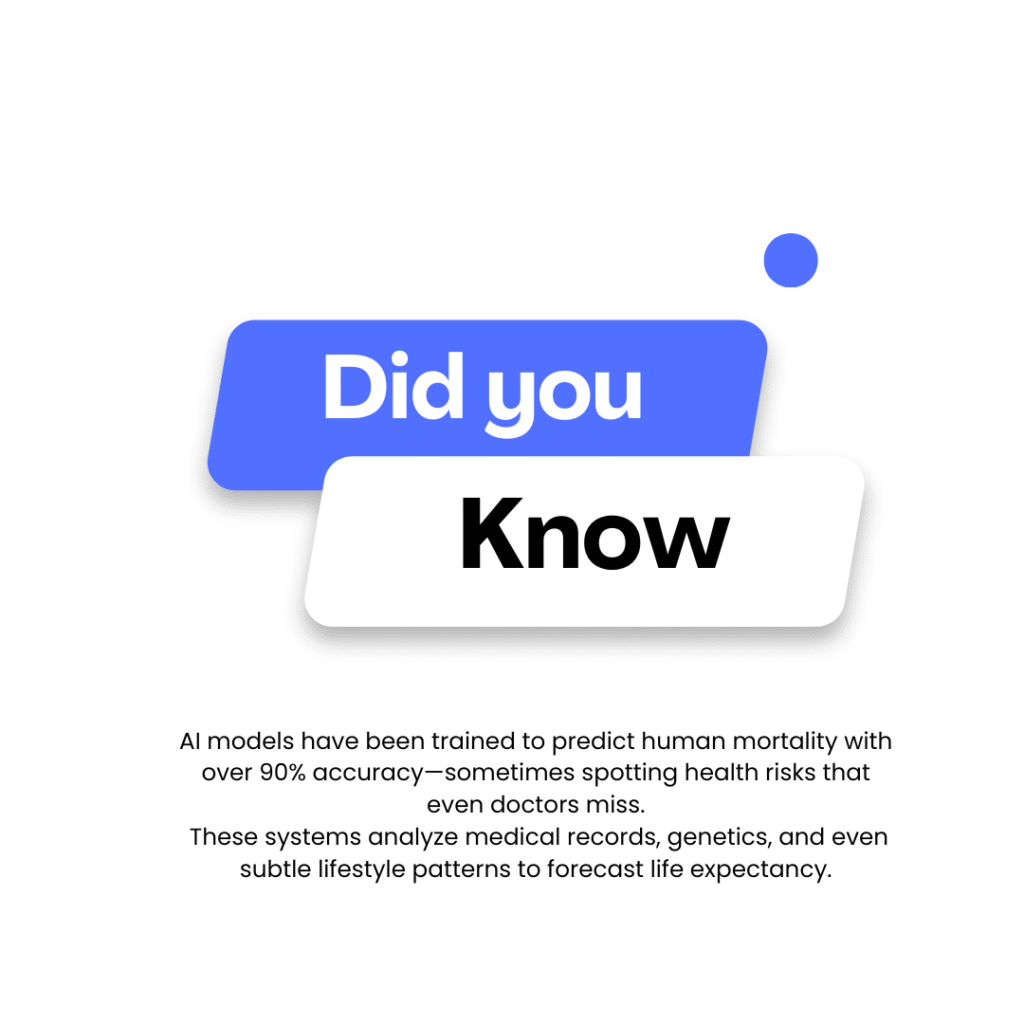
4. AI Is Inspired by Worms and Turtles
Recent advancements in artificial intelligence have led to the development of models that can predict human mortality with surprising accuracy.
These AI systems analyze large sets of medical data such as lab results, health records, lifestyle habits, and even wearable device data to detect subtle patterns that may signal serious health risks.
One such example is MIT’s work on “Liquid Neural Networks,” which are inspired by the brain structure of tiny organisms like worms.
These networks are not only efficient but also capable of adapting to new data in real-time, making them ideal for sensitive tasks like predicting health outcomes. By learning from massive amounts of health information, these AI tools help can doctors to identify high-risk patients early, potentially prevent critical illnesses or even death.
While the idea may sound futuristic, it is already being tested in real-world healthcare settings, which aims to support doctors not replace them in making life-saving decisions.
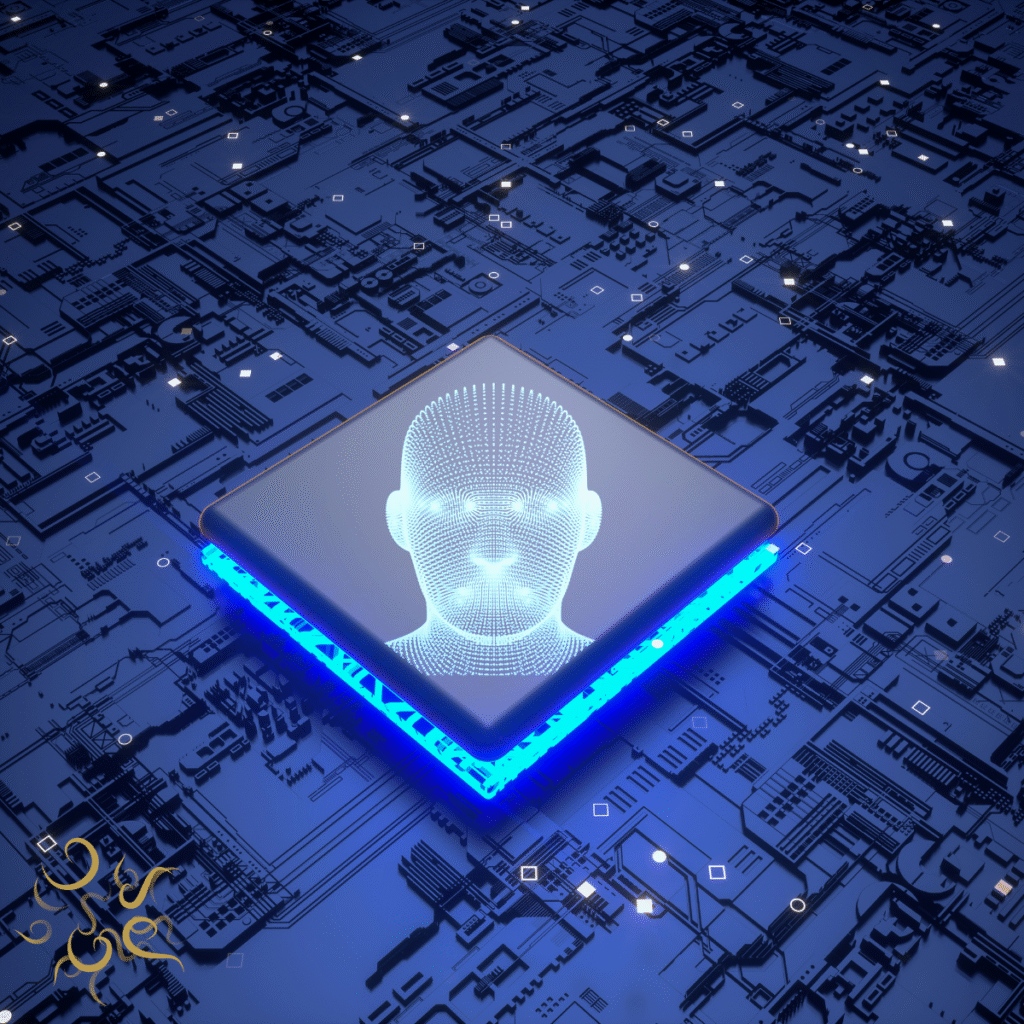
5. AI Can Design Robots from Text Prompts
Can you imagine just by typing a sentence and watching it turn into a real, walking robot. That’s exactly what researchers at Duke University have made possible with a new system called Text2Robot.
This AI tool allows users to design robots by simply writing what they want like “a robot that walks like a turtle.” The AI then creates a 3D model, figures out how it should move, and even plans where parts like joints and motors should go. What used to take weeks or months can now be done in just a day.
Text2Robot is not just fast, it’s smart also, it learns how to make robots work well in the real world. This breakthrough could change how we build robots, making the process quicker, easier, and more creative than ever before.
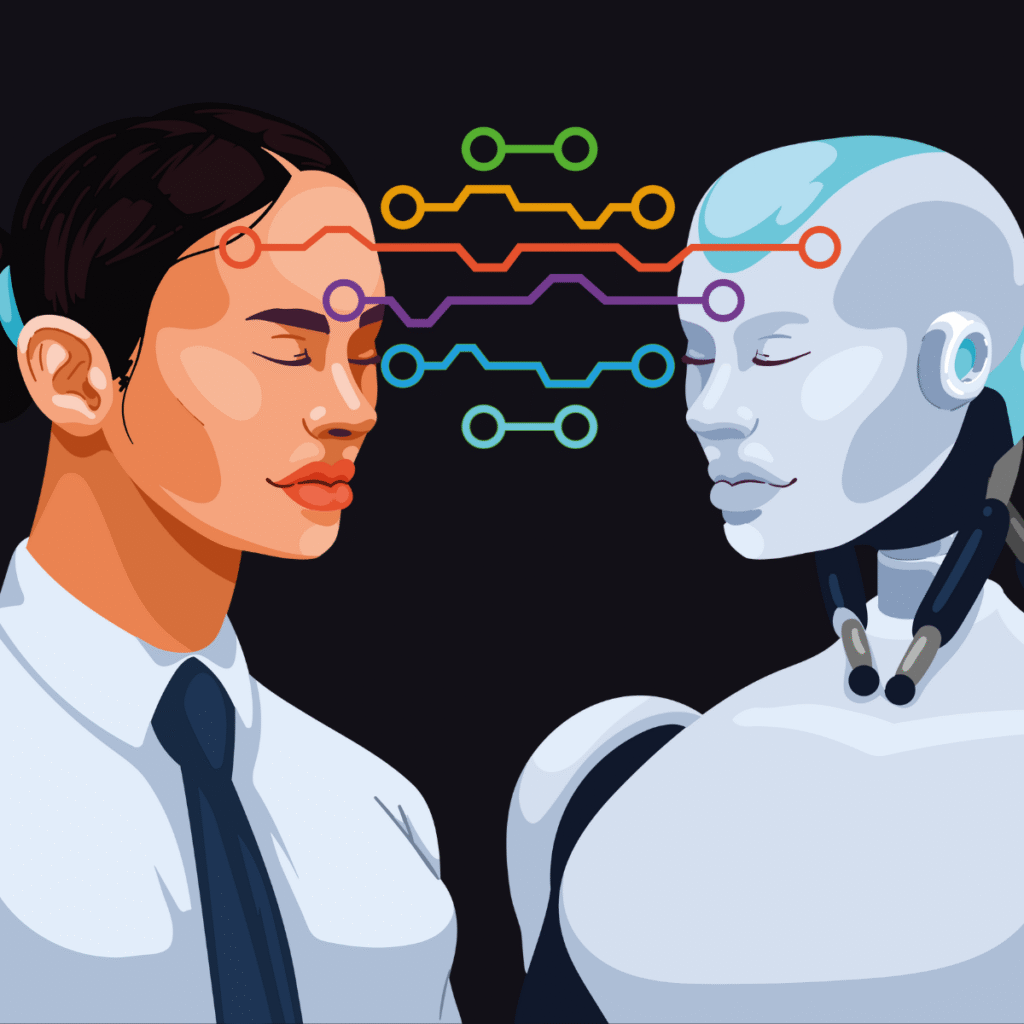
6. AI Is Being Used to Restore Old Photos
AI technology is revolutionizing the preservation of historical photographs by restoring and colorizing old, damaged images. Advanced AI-powered tools can repair cracks, enhance faded colors, and even reconstruct missing parts of photos, that brings new life into cherished memories.
These tools analyze the content of images and apply sophisticated algorithms to produce high-quality restorations that honor the original context.
This technological advancement not only safeguards personal and cultural heritage but also makes it accessible for future generations to experience history in vivid detail.
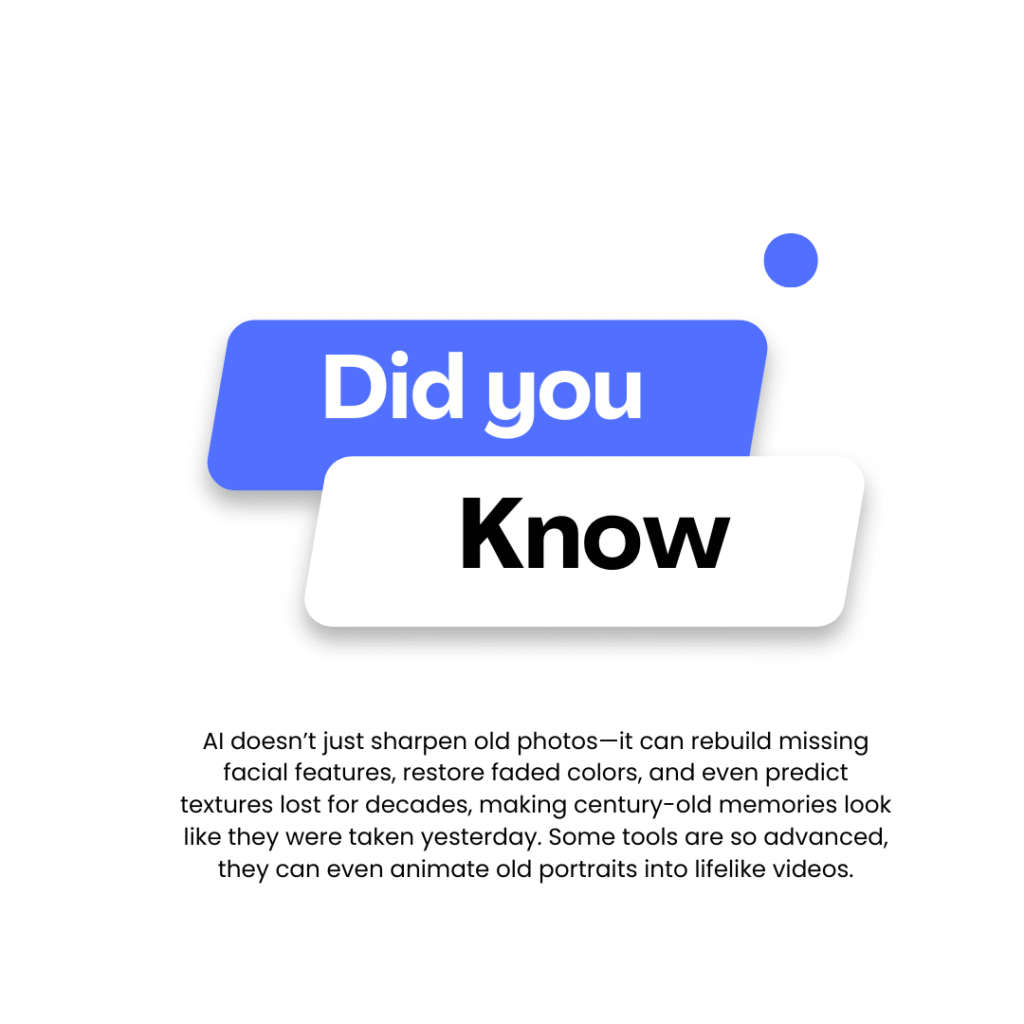
7. AI Helps Predict Natural Disasters
AI is playing a growing role in predicting the natural disasters like earthquakes, floods, hurricanes, volcanic eruptions, and wildfires. By analyzing large amounts of data such as seismic activity, satellite images, weather patterns, and even social media posts, AI systems can detect early warning signs and provide alerts.
For example, AI can study earthquake data to forecast aftershocks or use rainfall records to predict floods. These technologies help the governments and emergency services to respond faster, warn people sooner, and potentially save lives. As AI continues to improve, it will become an even more valuable tool in disaster preparedness and response.
8. AI Can Exhibit Bias Without Human Input
AI can sometimes show unfair or biased behavior, even if no one purposely programs it in that way. This happens because AI learns from large amounts of data, which may already include hidden biases or patterns.
Over time, the AI might start repeating or copying those unfair patterns. That’s why it’s important for people to regularly check how AI is working and make sure it’s treating everyone fairly.
9. AI Is Being Integrated into Physical Intelligence
Artificial Intelligence is no longer just about data and screens it is now stepping into the physical world. Known as Physical AI, this technology allows machines to see, move, and interact with their environment.
By combining smart algorithms with real-world components like sensors, cameras, and motors, AI-powered robots and machines can now perform physical tasks such as navigating spaces, picking up objects, or even delivering packages.
These machines learn from their surroundings, adapt to new situations, and improve over time. From autonomous drones to warehouse robots, Physical AI is helping industries to work faster, safer, and more efficiently that brings us closer to a world where intelligent machines work alongside humans in real-life environments.
10. AI Is Being Used to Democratize Education
AI is helping to make education fairer and easier to access for everyone, no matter where they live or their background. It creates lessons that fits to each student’s needs and gives instant help to improve learning.
Groups and organizations are working together with schools and governments to make sure AI tools are used in a way that protects student privacy and keeps the human touch in teaching. Thanks to AI, more students around the world can get a better education, making learning more equal and effective for all.
11. Babies and AI Learn the Same Way
Researchers are using insights from child development to train AI systems. Just like babies learn language from listening and context, some AI models now learn from unstructured environments instead of rules.
12. Some AI Models “Forget” Like a Human Brain
A research concept called catastrophic forgetting shows that AI models sometimes forget old knowledge when they learn new things similar to how we might forget a password after learning a new one.
13. AI Can Dream (Kind Of)
Google’s DeepDream project showed that neural networks can “hallucinate” patterns like turning clouds into dogs or trees into eyes when asked to over-interpret images. It’s like AI’s version of a surreal dream.
14. AI Can Create Entire Virtual Worlds
Game engines like Unity and Unreal now use AI to generate forests, cities, or NPC behavior with just a few prompts. Some indie games are nearly 100% AI-generated!
15. Some Ancient Languages Were Decoded Using AI
AI has been used to reconstruct and translate dead languages like Akkadian and Linear B by learning from ancient texts and comparing them to known languages.
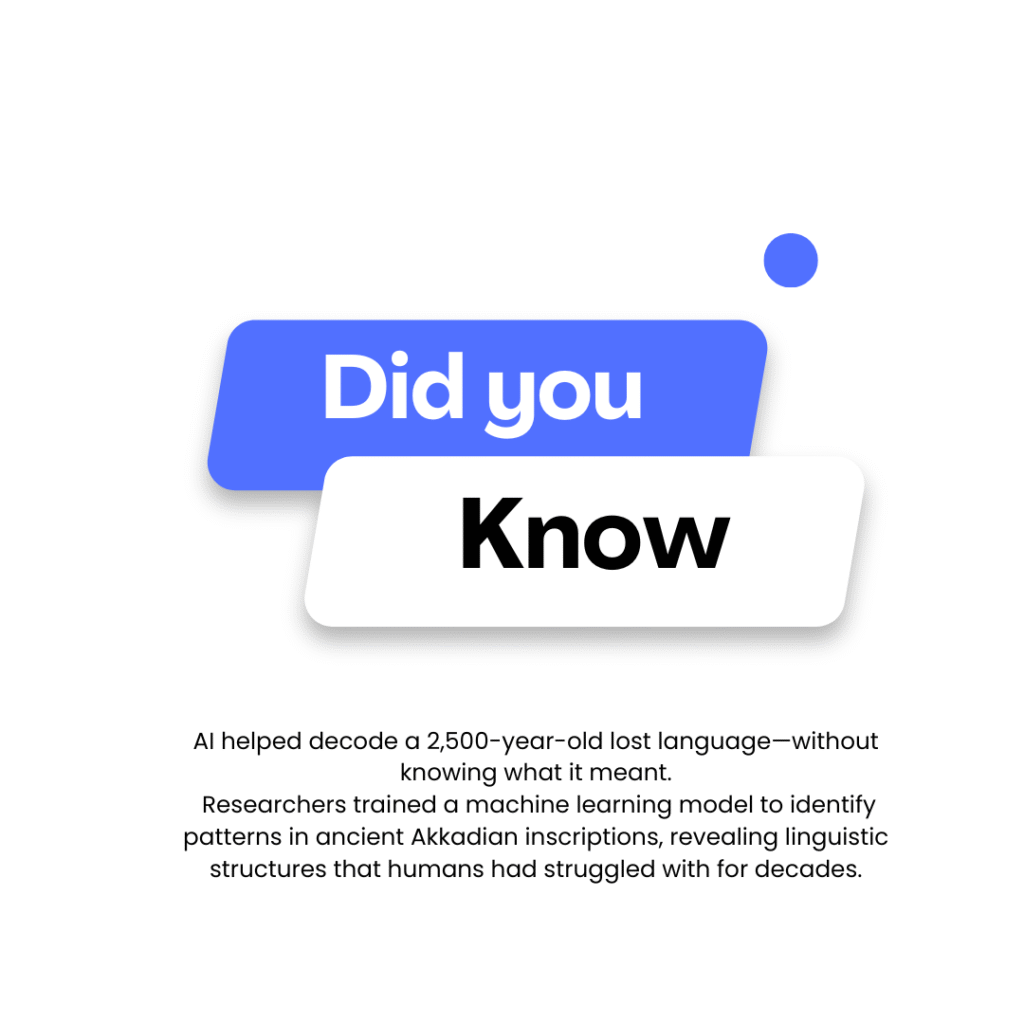
Conclusion : Facts about AI
Now you came to know that how AI is changing our world in amazing and surprising ways every day. From helping us learn to solving the big problems, these facts about ai shows how interesting it is. As technology grows, understanding AI better will help us to use it in smart and fair ways. The future with AI is exciting, and there is still so much more to discover!
What fact surprised you the most? Share your thoughts in the comments below, and don’t forget to share this post with your friends!
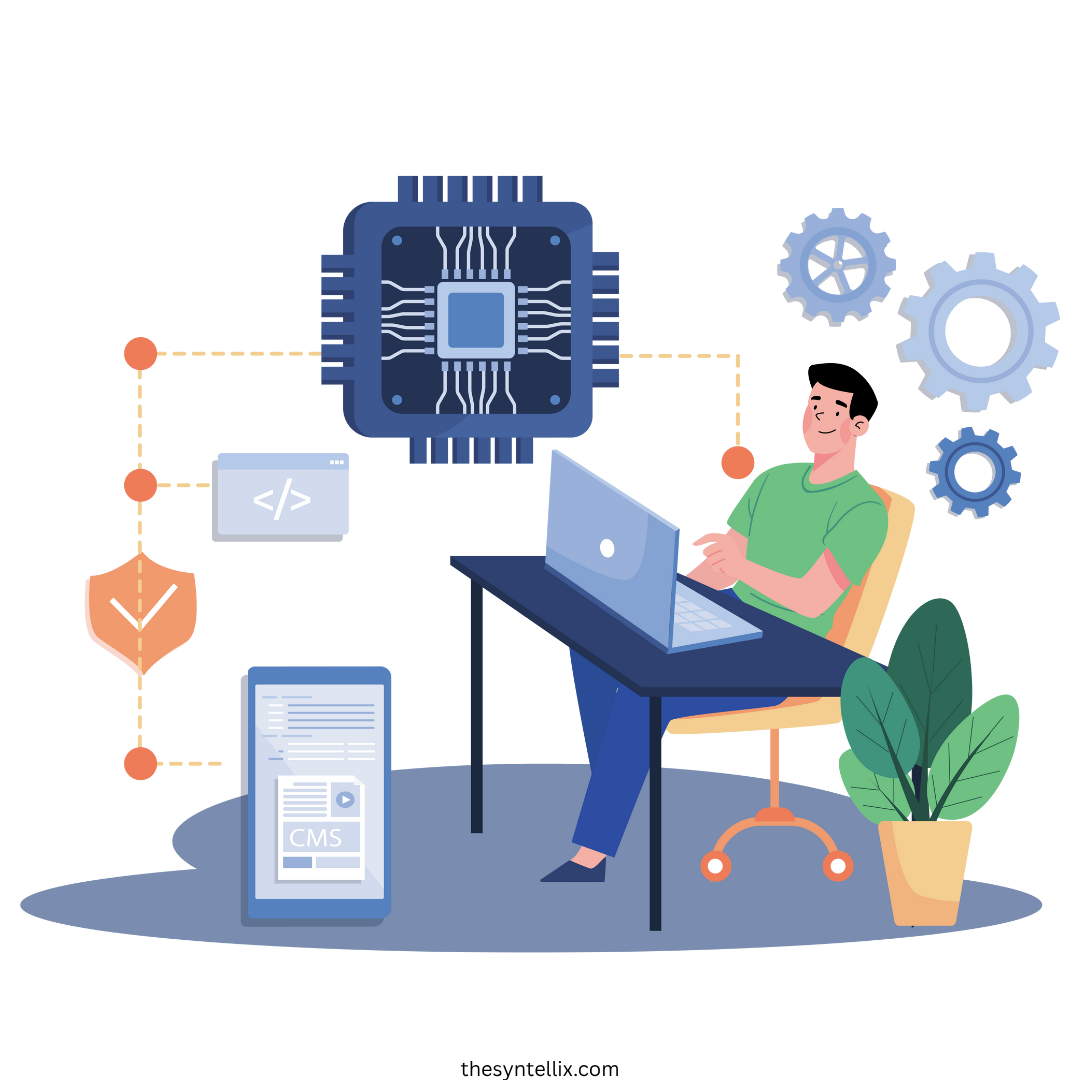
Stay ahead of the curve with the latest insights, tips, and trends in AI, technology, and innovation.
